Last Updated September 13, 2024
The most common thing any of us do to maintain the appearance of our cars is to wash them. Car washes are the foundation of detailing and are arguably the most important part of keeping a vehicle looking as good as possible for as long as possible.
But just like there’s more than one way to fry an egg, there are many different ways to wash a car. In this article, I’ll break down in depth every type of car wash, what they involve, and which ones are best for your vehicle’s health and appearance.

Do Car Washes Scratch?
Yes — car washes can scratch your paint, if you’re not careful.
Let me explain: You buy a new car, truck or SUV. Let’s assume because it’s BRAND NEW—driven right off the dealerships car lot—that the paint is perfect. There are no swirls, scratches, water spots, etc.
But if you take a look at your car’s paint in direct sunlight after regularly washing your car for a few months, you’ll see swirls and scratches built-up in the clear coat finish. The paint has lost its shine and luster.
So the question is, how did all these swirls and scratchers get into the finish on your car?
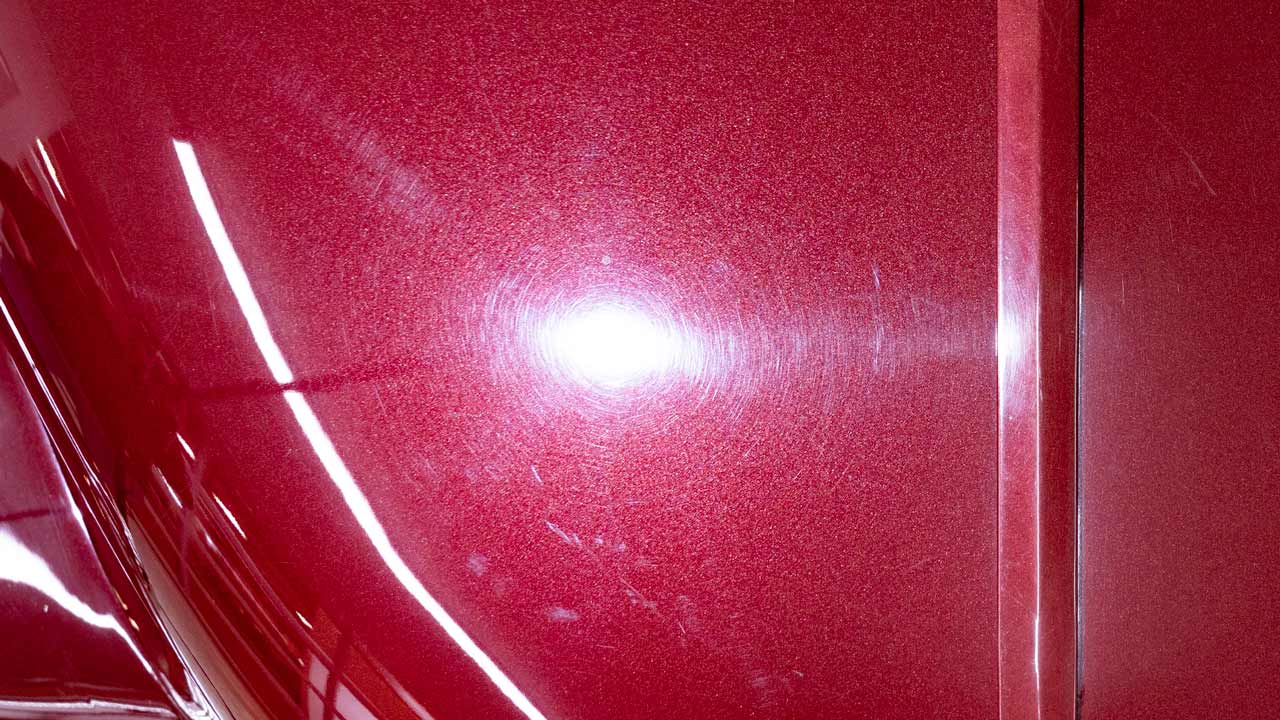
How To Avoid Car Wash Scratches
Swirls and scratches are caused by how you TOUCH the paint.
When I say that, I’m not talking about touching the paint with your hands. I’m talking about the things you use to wash, dry and apply products to your car.
When you use towels, brushes, wash mitts or applicators that are rough, low quality, dirty (or all of the above) you will scratch the paint.
Here are some tips to avoid scratches while washing your car.
- Use Clean Wash Mitts, Towels, Applicators and Brushes: Dirty wash mitts, towels, applicators and brushes are riddled with rough particles that inflict scratches when dragged across the paint.
- Use High Quality Wash Mitts, Towels, Applicators and Brushes: Low quality wash mitts, towels, applicators and brushes use cheap, rough materials that abrade the finish, causing scratches.
- Use a Grit Guard in Your Bucket: Grit Guards trap contaminant particles at the bottom of the bucket so they aren’t re-introduced to your wash mitt and cause scratches.
- Avoid Automatic Washes: Automatic washes rarely clean their abrasive cleaning brushes and as a result inflict heavy scratches into the paint during the washing process.
If you can follow those basic tips, you’ll eliminate 99% of the possible scratches you would have inflicted while washing otherwise.
The Different Types of Car Washes, Ranked From Best to Worst
Taking into consideration the goal is to get the car clean without inflicting any swirls and scratches, here are the best and/or safest ways to wash your car in order from best to worst.

1. Hand Wash (DIY)
Hand washing your own car is the safest way to wash your car, period. Because YOU are the owner, YOU care more about being careful than anyone being paid to do the job for you. That means YOU control what touches the paint, and if you’re careful, you won’t be using dirty towels and you certainly won’t be picking up and re-using wash mitts that were dropped on the ground.
Hand washing is pretty simple and can be done by anyone, even a car care novice.
- Blast the car with a strong spray of water to remove any loose dirt or dust.
- Starting at the top, wash the roof and then rinse.
- Wash the windows including the A-pillar, B-pillars and Sail Panels and then rinse.
- Next, wash the hood and rinse.
- Wash the trunk lid and rinse.
- Wash and rinse the vertical panels, one side at a time.
- Wash the grill and rinse
- Give the car a final rinse.
- Remove any standing water with a clean, uncontaminated drying towel or blow-dry the water off the car.
Here are some important tips to remember to ensure the safest wash possible for your car’s paint:
- Use The Two-Bucket System: The “Two-Bucket System” means you use separate buckets for soap and rinse water as opposed to using a single bucket for sudsing and rinsing.
After you wash a portion of the vehicle, you plunge the dirty wash mitt into the bucket of rinse water and agitate it against the Grit Guard at the bottom. This releases abrasive contaminant particles and traps them under the Grit Guard so they don’t get back on the wash mitt and cause a scratch. - Use a High-Foaming Lubricated Wash Soap: Heavy foam and surface slickness are the most important attributes of a high quality wash soap. A thick layer of foam helps to insulate the paint from abrasion, while slickness reduces friction, therefore preventing scratches.
- Wash & Dry Your Wash Mitts and Towels Afterwards: By doing so, you help prevent scratching contamination from embedding in the fibers of the mitt or towel.
PROS
- Safest way to wash your car because you’re using a large quantity of running water to both wash and rinse dirt off the car.
- Using plenty of water minimizes the risk for potentially instilling swirls and scratches.
- You are able to control the quality of the wash mitt and drying towel.
CONS
- Takes longer
- Requires more water
- Requires you have ready clean, uncontaminated wash mitts, drying towels, hose, sprayer, bucket, and car wash soap.
- Difficult to do in extreme cold or extreme hot weather.
Rating: 10/10

2. Touchless Car Wash (Commercial)
As far as commercial (done at a shop versus at home) car washes go, touchless is the safest. This type of car wash has come a long way and is continually evolving as chemical technology improves.
Touchless car washes spray strong alkaline cleaners onto the vehicle to dissolve heavy dirt, grime and traffic film built-up over time on the paint. The only downside is that these strong alkaline cleaners can and will remove any conventional paint protecting products like traditional carnauba wax or paint sealants. Repeated washings will tend to dull the paint, especially once any protection has been chemically stripped off.
Because these types of automatic car washes must be designed for the worst condition cars, when you bring your regularly maintained car in good condition, it gets the same harsh treatment as neglected, dirty cars. As I mentioned above, repeated exposure to these harsh chemicals will dull the paint over time.
Will Touchless Car Washes Strip Ceramic Coatings?
Most reputable brands of ceramic coatings are highly resistant to chemical degradation. Unless you used an entry-level ceramic spray, chances are your ceramic coating will survive the harsh chemicals used in a touchless wash.
Why Are Commercial Touchless Washes Considered Safer Than DIY Rinseless or Waterless Washes?
Great question. The answer is, with a touchless wash, nothing except chemicals, water and air are touching the paint. With a rinseless or waterless wash, you’re introducing the human element of the hand, and the things that will touch the paint, i.e., wash mitts and drying towels.
My experience is, unless someone has read an article like this, educating and warning about the contamination issue with wash mitts and drying towels, most people WON’T pay attention and thus rub contaminated wash mitts and drying towels over their car’s paint putting in swirls and scratches.
Thus, for most people, a touchless is safer. For the OCD car owner, it can be argued that a rinseless or waterless wash is safer, but these people are a minority in the big picture of things.
PROS
- Safer option than any spinning brush or spinning mop style automatic car washes
- Safer option for ceramic coated cars.
- Fairly priced for what you get (you don’t have to wash your car)
CONS
- More expensive than brush or mop style washes
- Harsh chemicals can dull and dry out the paint and any exterior plastic, rubber, and/or vinyl trim.
- May not remove severe dirt build-up and accumulated road film.
RATING: 8/10
3. Rinseless Wash (DIY)
Like the name implies, with a rinseless wash you’ll be washing your car without the use of a garden hose and running water. Instead, you’re going to put 2-4 gallons of water into a 5-gallon bucket. Mix in a quality brand of rinseless wash. This plus a collection of microfiber towels is all you’ll need to do a proper rinseless wash.
A rinseless wash is the safest and best way to wash your car if you are unable to use the traditional bucket wash method.
Perhaps it’s winter and freezing outside — you wouldn’t want to drag a bucket and hose out onto the driveway. Or perhaps you live in a Condo or Apartment and there’s nowhere to wash your car. Or possibly you live in a geographical location suffering under drought conditions, and you’re not allowed to wash a car using free running water. If this describes your situation, a good option would be to use a rinseless wash.
The steps for a rinseless wash are pretty similar to a regular hand wash:
- Wash and dry one panel at a time starting with one half of the roof.
- Next move over to the other side of the car and repeat this to the other side of the roof.
- After washing and drying the roof, next wash and dry all the window glass.
- After cleaning all the glass, wash and dry the hood.
- Then wash and dry the trunk, followed by washing and drying all the vertical panels, one panel at a time.
How to Avoid Scratches When Doing a Rinseless Wash
The only problem with rinseless washes is that it can be hard to clean the entire vehicle with just one towel for washing and one towel for drying without scratching the paint. The grime, gunk and particles build-up with each successive panel, scratching the paint as you wash.
The best way to avoid scratches when doing a rinseless wash is to use the “Multiple Towel Method”. Instead of using a single microfiber towel, sponge, or wash mitt, you can use a fresh, clean, uncontaminated microfiber towel for each panel. The idea being to wash each panel with a separate microfiber towel, wash mitt or sponge.
Most people will use multiple microfiber towels instead of multiple wash mitts or wash sponges because it’s more cost effective. A 2-door passenger car has 9 major body panels to wash separately. This would mean,
9 Microfiber Towels
9 Wash Mitts
9 Wash Sponges
Right away, it’s easier to see and understand it will be less costly to use multiple microfiber towels, versus purchasing all the wash mitts and/or sponges you would need to use this safer approach. The wash mitt I like, use, and recommend to others costs $9.99 – let’s just call it $10.00 – 9 of these wash mitts will cost you $90.00 – so using the multiple TOWEL method will get the job done and is simply more cost effective and practical.
PROS
- When performed correctly, a rinseless wash can be both fast and safe for our car’s paint.
- Requires a lot less water than a traditional bucket wash
- A good option for cars that are well taken care of and not horribly dirty
- A good option when other options are not available.
CONS
- Requires more technique
- Requires you to be more careful
- Requires more towels
RATING: 7.75/10
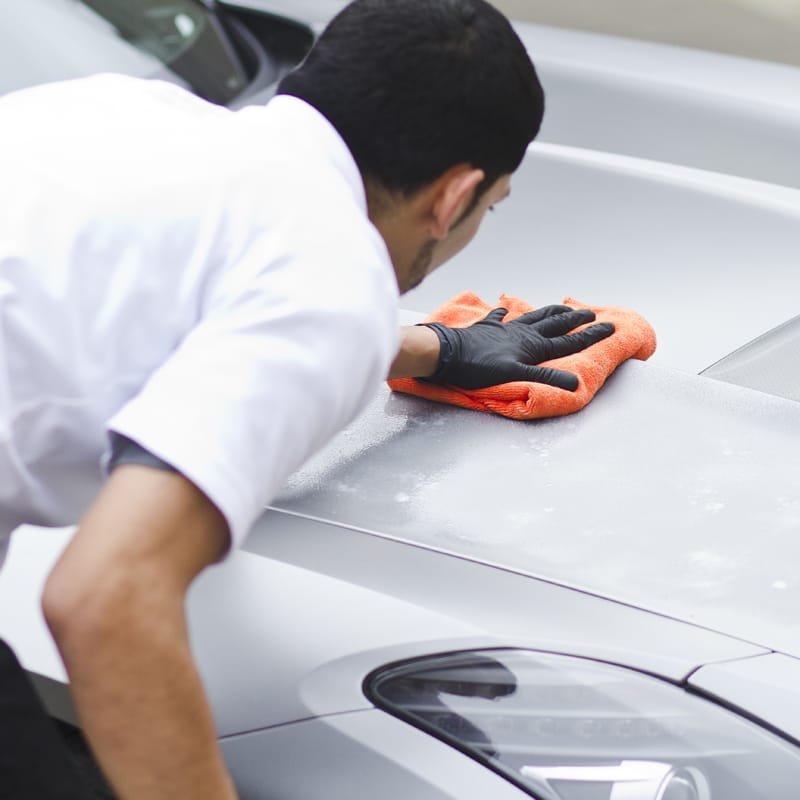
4. Waterless Wash (DIY)
Contrary to the name, waterless wash sprays do contain water — it’s just a lot less water compared to a bucket wash or even rinseless wash.
To do a waterless wash, you spray the panel with a waterless wash solution until drips appear. Then you use a microfiber towel to wipe the area free of grime and contamination. It’s similar to using a detail spray, only instead you’re cleaning the entire vehicle with it.
Most people are wary of waterless washing because they think there’s no way to do it without scratching the paint. While this is true for a car that is caked with heavy mud or dirt, you can safely use a waterless wash on lightly dirty cars, such as a garage-kept car that only has light dirt and dust accumulation.
How to Avoid Scratches When Doing a Waterless Wash
Like with a rinseless wash, the best way to avoid scratches while waterless washing is to use a fresh new towel for each panel, reducing the potential for cross contamination and thus the potential risk for putting swirls and scratches into your car’s paint. You should also fold your towels to maximize the amount of clean sides to wipe each panel with.
- Spray the waterless wash onto a body panel until drips appear. If the panel is large, only apply to half the panel at a time.
- Fold your microfiber towels 4-ways and make a single swipe over the panel.
- Flip the towel to the other side and repeat with a fresh swipe over this panel and overlap a little into the first swipe.
- Repeat this process folding the towel to a clean side for each swipe over the paint.
- With the average size microfiber towels, folded 4-ways, you’ll get 8 sides to wipe with. Once you’ve used all 8 sides of a single towel, place this now-dirty towel into a clean bucket and switch to a clean, dry towel.
- Repeat on each panel.
PROS
- Fast and safe approach for cars that are only lightly dirty.
- Safe alternative when there’s no other way to get your car clean.
- Perfect for classic cars or other special interest cars where you want to introduce the minimal amount of water to the car to avoid getting water into out-of-sight places where you cannot dry or remove water and now it can potentially cause rust.
- Excellent option when washing a car using the traditional approach due to weather or geographical location is not an option.
CONS
- Not a good option for cars with heavy levels of dirt and road grime.
- Not as safe as a traditional bucket wash.
- Requires a lot of clean, uncontaminated microfiber towels.
- Requires better wiping technique to perform safely and effectively over a wide range of different shaped body panels.
RATING: 6/10
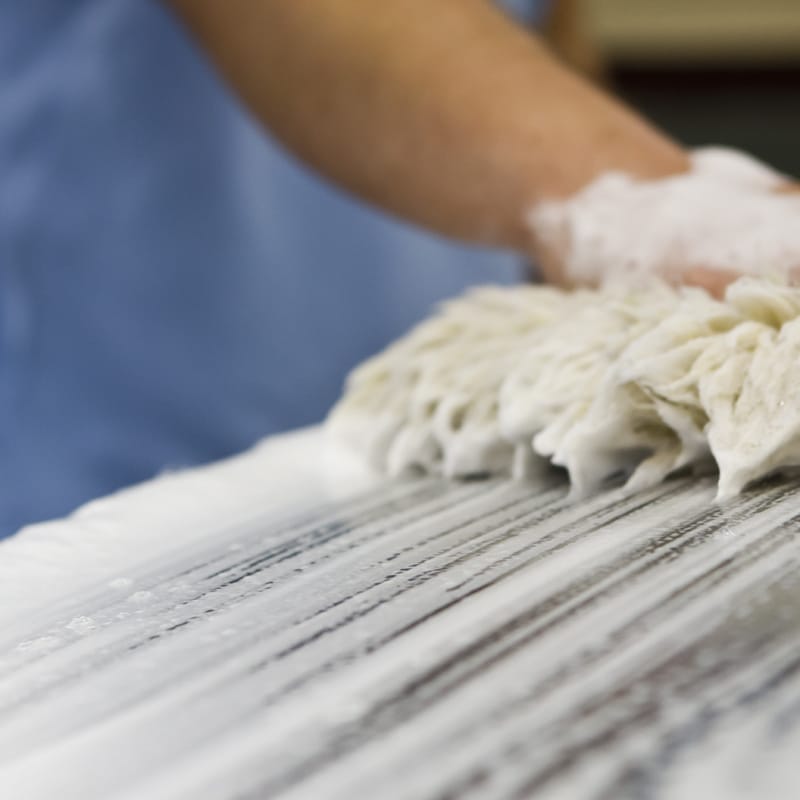
4. Hand Wash (Commercial)
Commercial hand car washes aren’t always the best option for a car because car wash shop employees don’t always take proper care to avoid scratches. When you hand wash your own car, you control what touches the vehicle. But when you give the work to a car wash employee, it’s up to them to take the proper care to ensure a scratch-free wash.
The fact is, there are a lot of car wash employees out there that simply don’t care enough to use fresh wash mitts on each car, or to not re-use a wash mitt that was dropped on the floor.
I do believe there are some commercial hand wash businesses that do in fact provide the VIP White Glove treatment when it comes to washing cars. This means, the owner is knowledgeable about both the scratch-sensitive nature of modern clear coat paints as well as their customers and potential customer’s concerns with getting a good but also SAFE hand car wash. These types of hand car washes do exist. The difficult part is finding this car wash option.
I will dare to say, that while everyone’s intentions are good and noble when it comes to these types of car washes, in order for them to be safe, you need,
- Thoughtful and caring employees with strong work ethics.
- A protocol in place where wash mitts are swapped out after each car washed.
- A protocol in place where the bucket with soapy water being used is swapped out after each car washed
- A protocol in place where the drying towels are swapped out often.
If none of the above are being performed, this means each next car that is washed will be washed using the same wash mitt, same bucket of soapy water and same drying towel used to wash and dry ALL the cars that have gone before you.
I guess if you’re the first car in line you might be okay, but this assumes they start each new day with fresh, clean uncontaminated wash mitts, fresh buckets of soapy water and clean, dry uncontaminated drying towels. I think it’s safe to say this is also the exception to the rule. These types of car washes tend to be super busy, corners are cut, and this means you risk having swirls and scratches instilled into your car’s paint finish anytime you use this option.
How to Avoid Scratches When Using a Commercial Hand Wash
If you’re willing to establish a relationship with the business and the regular employees, he is an option that some have used successfully.
When you arrive, seek out the key person in charge of the work force and ask if they can use YOUR WASH MITTS when they wash your car. I have personally known people that have done this successfully. The key is you have to give these people an incentive to both use your clean, uncontaminated wash mitts and this is called a “tip”.
That’s right, tip them before they start. And after tipping them, ask them if it’s possible to also use your car wash soap in a fresh bucket of water.
If you can get this type of help and are willing to tip well, then a commercial hand wash operation is a good and safe way to get your car washed and clean without doing the work yourself.
RATING: 5/10 (9/10 if employees are properly trained)

5. Automatic Wash (Commercial)
Also called “tunnel washes”, these automatic washes send your vehicle through a tunnel lined with automatic washing brushes and spinning mop cloths while spraying the exterior with soap and water to loosen, break down and remove grime.
Out of all the above options, these types of automatic car washes are the WORST type of wash for your car’s paint and any exterior gloss plastic panels, like b-pillars. That’s because they use abrasive bristles and mop cloths that don’t get cleaned between washes. Between the rough bristles and dirty mop cloths, automatic washes inflict horrendous swirls and scratches into the paint.
While modern cars may feature durable clear coats, these clear coats remain scratch-sensitive and will become riddled with swirls and scratches after even a single automatic wash. The more times a car goes through this type of car wash, the more scratches accumulate and the faster the paint will deteriorate. Millions of scratches in your car’s paint OPENS up the paint and this leads to faster deterioration when exposed to sun and wet weather.
In worst case scenarios, repeated visits to this type of car wash will lead to premature clear coat failure. clear coat failure is when the paint looks like it has a rash. The paint, typically on the horizontal surfaces, basically breaks down and flakes off the car. The ONLY way to fix clear coat failure it to repaint the car.
And like we mentioned before, the brushes and mop cloths used are NOT cleaned between washes. That’s a big problem because you never know what cars are going through an automatic car wash BEFORE your car. Every time a super dirty car, or for example, a muddy truck, goes through one of these types of washes, the dirt and mud that comes off the truck before you is now on the spinning brushes and/or mops. Now they’re whipping this dirt against your car’s paint.
There’s simply now safe way to use an automatic car wash that uses either some form of brush or some form of cloth mop spinning against your car’s paint. Any other car wash option will be safer.
PROS
Inexpensive
Easy to find in most cities
Can do a great job of getting your car clean
Fast
CONS
Puts millions of scratches into your car’s paint
Uses harsh cleaning chemicals
RATING: 1/10
6. Fundraising/Charity Car Wash
We’ve all seen these types of hand car washes on the corner of a gas station, or quickie mart. It’s usually made up of great people with noble intentions. For a small contribution, they will wash your car.
This can include groups like the local football team, cheerleaders, churches, as well as fundraising car washes for nobel causes, school supplies for children, local pet humanitarian organizations, etc.
I’ve personally organized and been in charge of a number of fundraiser car washes over the years as my daughter was a cheerleader in Jr. High and High School. As well intentioned as a bunch of giggling high school girls can be, you seriously don’t want them washing your car if you care about the finish quality of the paint.
Even after doing my best to hold a mini-class for the cheerleaders and explain to them the basics of how to correctly wash a car, I’ve watched in horror as these girls would drop a brand new wash mitt onto the pavement of a parking lot and then pick it up and go right back to washing a black Mercedes-Benz.
I understand and appreciate the idea and good intentions of anyone conducting a charity or fundraiser car wash. It’s a fact that the masses don’t know anything about the scratch-sensitive clear coat paint on their cars. Nor do most people know how much work is involved in removing all the swirls and scratches inflicted into the paint from a single, careless car wash. As well as the fact that removing swirls and scratches means removing a little bit of the thin and precious clear layer of paint.
For this reason, what I’ve always recommended to people that want to help out the cause is to pull into the car wash, hand them $5.00 and then leave.Help the cause but don’t let them touch your car. Now that’s a Win/Win deal. JUST DON’T LET THEM WASH YOUR CAR!
PROS
It’s for a good cause
CONS
It’s really a bad idea if you care about keeping your car swirl and scratch free.
RATING: 0/10
If you want to keep the finish on your car looking scratch and swirl-free, then the best way to do this is to take ownership of the car wash process.
Like I mentioned, if you think about it, the thing most of us do to our car to maintain it is we wash it. Most of us don’t change spark plugs or even change the oil. We take our cars to the dealership for this type of maintenance.
What’s left that we can do is wash and dry the car. And this is important because you want to keep the paint clean and avoid a build-up of road film and airborne pollution from landing on and then bonding onto the paint.
My strong recommendation is, take ownership of the car wash process and buy quality tools that help you to do the job right the first time.
Do You Have a Passion for Perfection When it Comes to Detailing Your Cars?
- Would you like to take your detailing skills to a higher level?
- Do you find you learn better by doing versus sitting in a chair looking at a PowerPoint presentation about car detailing?
Here at Dr. Beasley’s O.R., (Operating Room), in sunny Stuart, Florida, we teach the most hands-on car and boat detailing classes on planet Earth. And we prove it too. You can find write-ups on the Dr. Beasley’s Blog that photo-documents just how hands-on our classes are plus you’ll see the kinds of cars and boats you’ll be training on.
Click the link below to find the dates, locations, topics, and prices for all upcoming detailing classes.
Upcoming Detailing Classes – Prices – Info – Topics – Locations
And if you ever have any questions, always feel free to reach out to me personally via text, phone call or email.
I hope to see you in a future detailing class!
Sincerely,
Mike Phillips
Chief Education Officer for Dr. Beasley’s
Mike@drbeasleys.com
760-515-0444

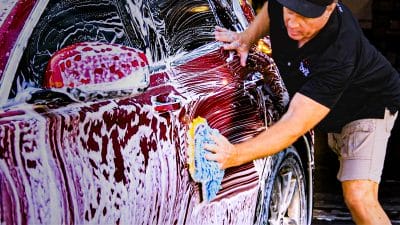

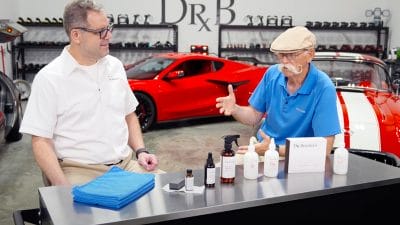
Beautiful write up ! Love it
Useful information shared..I am very happy to read this article..Thanks for giving us nice info. Fantastic walk-through
Many thanks for the exciting blog posting! I really enjoyed reading it, you are a brilliant writer. I actually added your blog to my favorites and will look forward for more updates. Great Job,
thanks for the FANTASTIC post! This information is really good and thanks a ton for sharing it :) I m looking forward despee that ever did that. Keep it up
Useful information shared..I am very happy to read this article..Thanks for giving us nice info. Fantastic walk-through. I appreciate this post
This blog is very well written and I appreciate your efforts.. Keep up the good work.
Thank you!
Thanks for sharing up–to-date on this subject! I find it is very informative and very well written one! Keep up on this quality
Hi, This is a good post, indeed a great job.. You must have done good research for the work, i appreciate your efforts.
That is very helpful. It presented me a number of ideas and I’ll be placing them on my blog eventually. I’m bookmarking your website and I’ll be back
Rinseless can be the safest if a pre treat spray is applied to while car before contact wash with a good rinseless sponge and bucket solution.
First of all let me tell you, you have got a great blog. I am interested in looking for more of such topics and would like to have further information. Hope to see the next blog soon.
Nice post. I study something more difficult on totally different blogs everyday. It can always be stimulating to read content from other writers and practice a bit of something from their store. Thanks for sharing.
This blog is very well written and I appreciate your efforts.. Keep up the good work.
Thank you!
This is nice post which I was awaiting for such an article and I have gained some useful information from this site. Thanks for sharing this information.
This is a good post, indeed a great job.. You must have done good research for the work, i appreciate your efforts.. Looking for more updates from your side.
You made some good points there. I did a search on the topic and found most people will agree with your blog
I am heartily impressed by your blog and learned more from your article. Thank you so much for sharing with us. I find another blog like it. If you want to look, visit here Car Wash Brush , It’s also more informative.
kizi
Finding a car cleaning product that performs well nowadays is not challenging at all. Nevertheless, such commercial cleaning products are not always suitable for you and your favorite asset as they may contain harmful substances. The wrong car wash soap will degrade the health and beauty of your car. The typical chemical scent can be unbearable for you and negatively affect your babies or pets as well.
I have an important business dinner in a few days, and I just realized my car looks like it’s been buried in mud and dirt. I really liked that you explained car washes services and their differences, so I think your article will help me find the right technique for my car. Thanks for the advice on which types of car washes are less likely to scratch my vehicle. https://kccarwashes.com/shop/ols/products/spot-free-residential-car-wash-and-rinse-system
Ok how hold is boyrugee
13 years old
Well written post. Really useful for sensitive areas such as the engine bay where there is the battery and other components
Hardly surprising that most detailers recommend hand washing – they’re not exactly impartial, are they?
I am heartily impressed by your blog and learned more from your article protection relay
now a days finding best thing is not easy DIN Rail Thermostat
I have a friend that does waterless car washing, and he reckons that the product is very important, and he says that he leaves no scratches and the car stays clean for a long time. Of course, he says, there are limits to the amount of gunk before you need an initial water wash.
Good